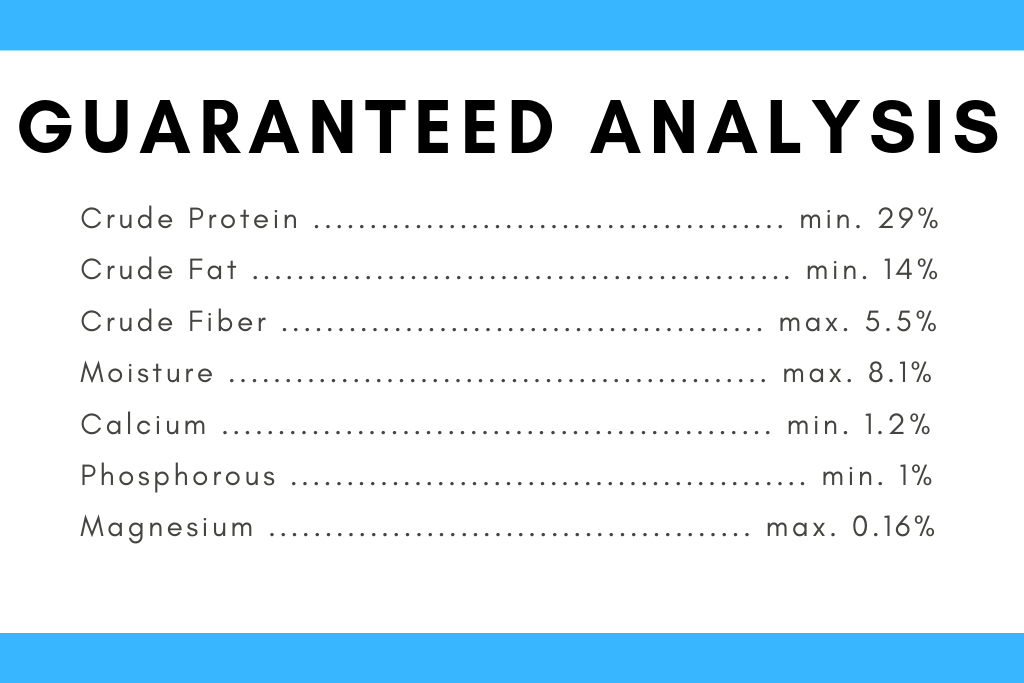MORE TO SHIP FREE 🚚
NICE. SHIPPING IS FREE 🎉
MORE TO REDEEM GIFT 🎁
YAY. REDEEM A FREE GIFT 🥳
YOUR CART IS EMPTY. SHOP NOW.
While the advancement in pet food nutrition has certainly reached new heights over the years, inflated marketing claims are aplenty - making it challenging to discern between high-quality and low-quality pet food. Going beyond what’s printed on the front of the packaging, you’re able to glean so much more information from pet food labels on the back. Find out how to tackle the ambiguity that comes with pet food labels!

Product names are undoubtedly the most misleading piece of information on any pet food. This is where pet food brands get creative and put their marketing tactics into action in the form of wordplays to entice the pet parent, while adhering to a specific set of regulations established by the Association of American Feed Control Officials(AAFCO). The AAFCO is a private non-profit organization that sets the standards for both animal feeds and pet foods.
So, while “Beef Dog Food,” “Beef Dinner for Dogs,” “Dog Food with Beef,” and “Beef Flavoured Dog Food” may all look like they’re referring to the same thing, they actually differ vastly from one another.
How to distinguish*
95% Rule:Beef Dog Food must consist of at least 95% of the named ingredient (beef) in the product title. For instance, Small Batch Freeze Dried Duck Bites Dog Food Mixer must contain at least 95% duck, excluding water (at least 70% with water). If a product title has 2 ingredients e.g. Beef and Salmon Dog Food, then beef and salmon make up 95% of the product combined, with a higher percentage of beef than salmon as it appears first on the label.
25% Rule:(Beef Dinner for Dogs) If the food contains at least 25% but less than 95% (excluding water) of the named ingredient(s) on the label, then it needs to have a designated descriptor such as entree, dinner, or platter in the name.
“With” Rule:(Dog Food with Beef)When you spot a ‘with’ on a food label, then you know the ingredient that follows only need to make up at least 3% of the food. In this case, Dog Food with Beef only needs to comprise of at least 3% of beef.
“Flavour” Rule:(Beef Flavoured Dog Food)This is a sneaky one. Products with the word ‘flavour’ in them do not need to have a specific percentage of the named ingredient in the food, just a sufficient amount to be detectable.
*According to AAFCO guidelines, as cited by the FDA here

Perhaps the most important chunk of information on any pet food packaging - the ingredients list is a rich source of everything-you-need-to-know. Ingredients are listed in descending order according to their pre-processed weight. The emphasis here is on: pre-processed weight.
The general consensus has also been to look for food with meat as the first ingredient. However, some food such as beef tend to carry more moisture than say, venison, and are more likely to be listed as the first ingredient regardless of their weight after moisture is extracted. That is to say, it may actually contain less protein than another ingredient listed farther down the list.
Another area of concern isfractioning- this is the splitting of filler ingredients like corn to make it appear as three separate ingredients: ground corn, corn meal, and corn gluten. These three all appear lower on the list as there are less of each component compared to ‘corn’ itself.

The guaranteed analysis is a section that is often looked over due to its confusing nature. It lists guarantees for minimum percentages of crude protein and crude fat, and maximum percentages of crude fiber and moisture, and other additional key nutrients in the food. Note: crude here refers to the method of analysis and does not relate to the quality of nutrients or food.
Moisture content skews the percentages quite a bit, so measuring the food on a dry matter basis (eliminating all moisture) will give a more accurate picture of the amount of nutrients in the food. This comes in handy when cross-comparing dry and wet food since the latter has a significantly higher moisture content.

A printed nutritional adequacy statement by the AAFCO is an indication that the food is complete and balanced (met all nutritional requirements) for a particular life stage. However, it’s good to note AAFCO is a private organisation and does not regulate pet food like the FDA does. The guidelines set by the AAFCO are the bare minimums and even if met, may not point to optimal nutrient intake for your pet. So, take this piece of information with a pinch of salt and always read the guaranteed analysis and ingredients list thoroughly for more concrete pointers on the nutritional value of food.

This part is rather straightforward - feeding guidelines gives you an idea of how much you should feed your dog based on his body weight on a daily basis. However, it’s not necessary to follow the guidelines to the tee as many factors can influence your dog’s food intake. Some brands like Ziwi Peak air-dried dog food also packs more power than raw food or kibble so you can feed smaller quantities per day. The printed guidelines are merely a set of recommendations, so if you’re not sure, always consult your vet first to determine the appropriate serving size per meal for your pup.
 KIM LEE
KIM LEE
Comments will be approved before showing up.
Arthritis can make movement painful for dogs, but the right diet can help improve comfort and mobility. Learn how weight...
Dogs can eat raw food, but random meat pieces aren’t balanced. Learn the challenges of DIY raw feeding and why...
Dogs don’t need much to be happy. The best gift? You! Spending time together, doing all their favourite things, is...



